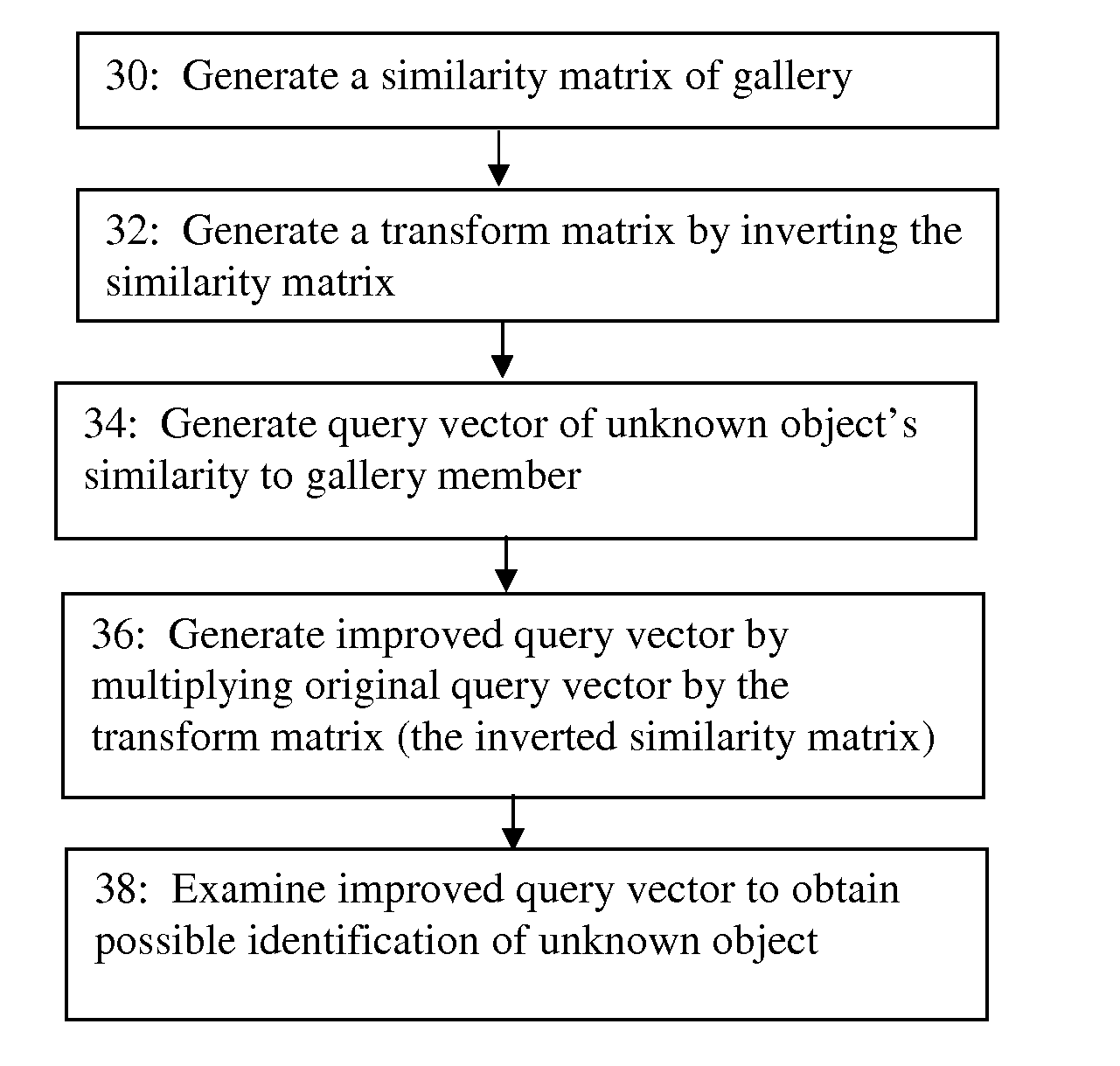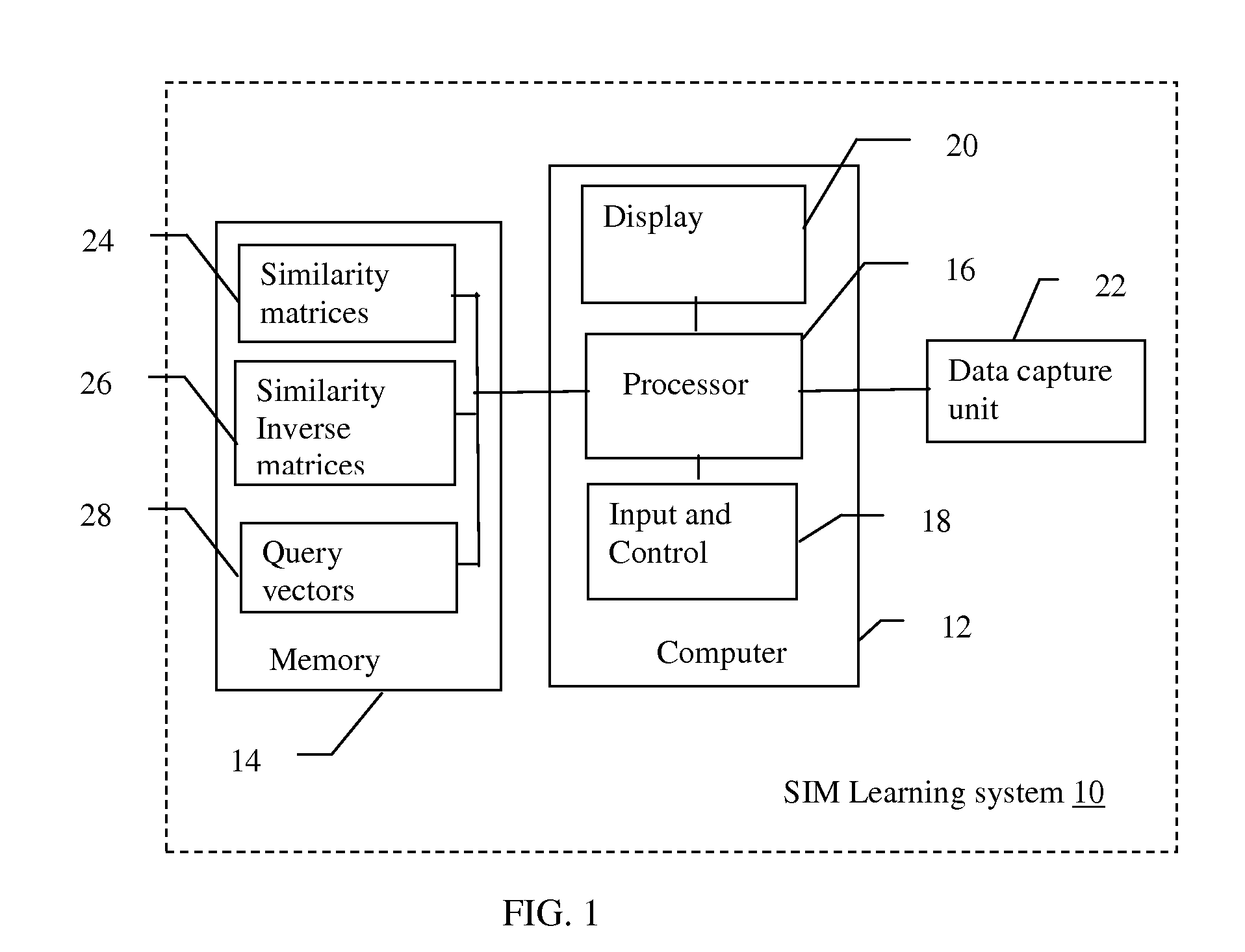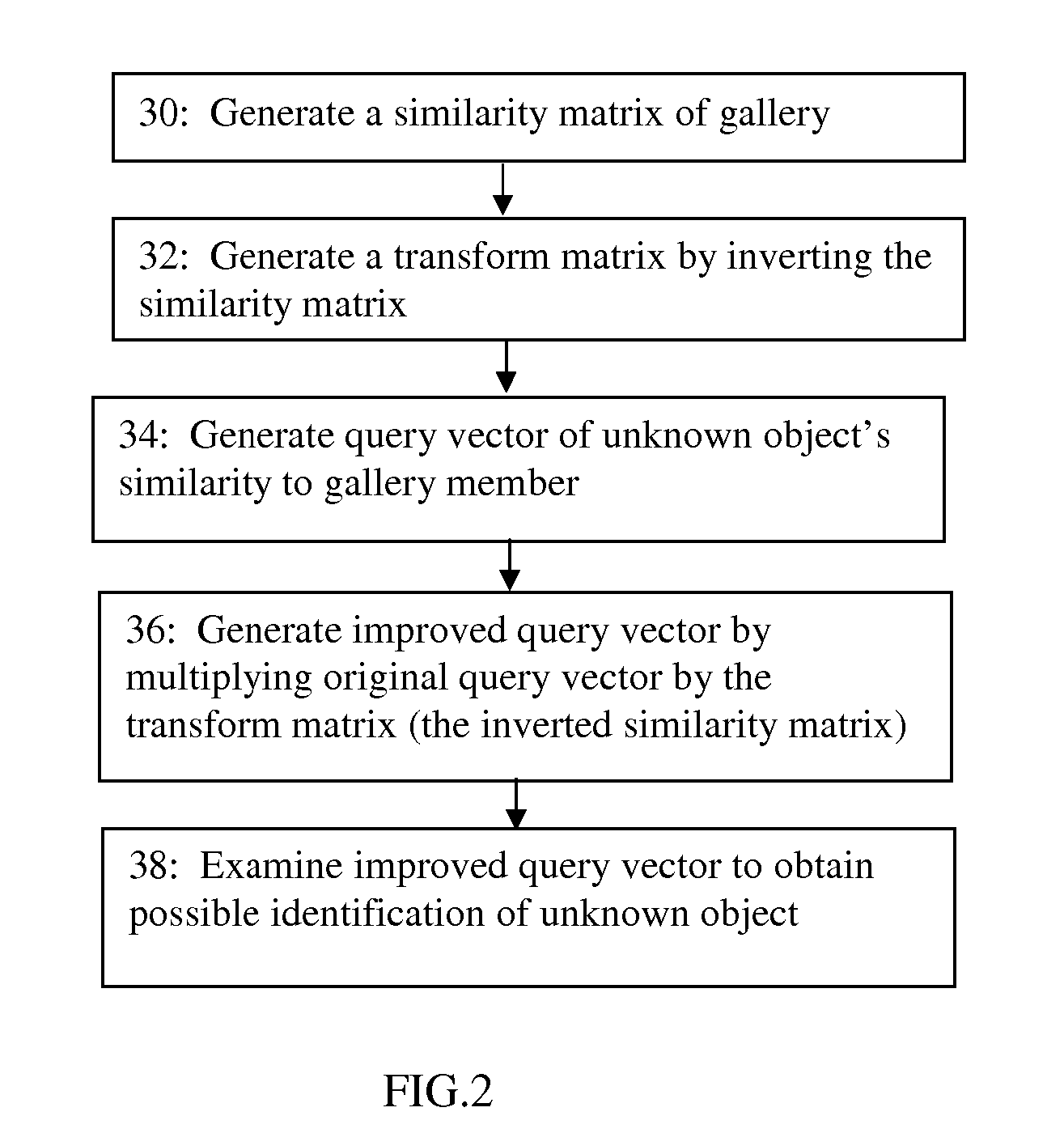System and Method for Machine Learning using a Similarity Inverse Matrix
a similarity inverse and matrix technology, applied in the field of system and method of machine learning, can solve the problems of inherently slow convergence of gradient-based method used in neural network learning, inability to guarantee that even a localized minimum is attained, and many local minima of empirical risk functions, so as to improve improve the use of similarity vectors, and improve the effect of one or more query vectors
- Summary
- Abstract
- Description
- Claims
- Application Information
AI Technical Summary
Benefits of technology
Problems solved by technology
Method used
Image
Examples
Embodiment Construction
[0021] The present invention applies to systems and methods of machine learning using similarity inverse matrices.
[0022] The method of the present invention may, for instance, be used to find any face in a picture, as currently done using kernel machines such as a Support Vector Machine (SVM), but without the drawbacks of kernel machines. Like an SVM, the method of the present invention may, for instance, learn to detect a face under all types of pose, illuminations and backgrounds. Once the face is detected it may then be rescaled and normalized for its illumination differences with the training images. This resulting new image may then used to expand an existing similarity matrix or used to create a new similarity matrix. Although the detailed description below is, for simplicity, described primarily with reference to a face detection system, one of ordinary skill in the art will readily appreciate that the system and method of the present invention may be used to detect and clas...
PUM
 Login to View More
Login to View More Abstract
Description
Claims
Application Information
 Login to View More
Login to View More - R&D
- Intellectual Property
- Life Sciences
- Materials
- Tech Scout
- Unparalleled Data Quality
- Higher Quality Content
- 60% Fewer Hallucinations
Browse by: Latest US Patents, China's latest patents, Technical Efficacy Thesaurus, Application Domain, Technology Topic, Popular Technical Reports.
© 2025 PatSnap. All rights reserved.Legal|Privacy policy|Modern Slavery Act Transparency Statement|Sitemap|About US| Contact US: help@patsnap.com



